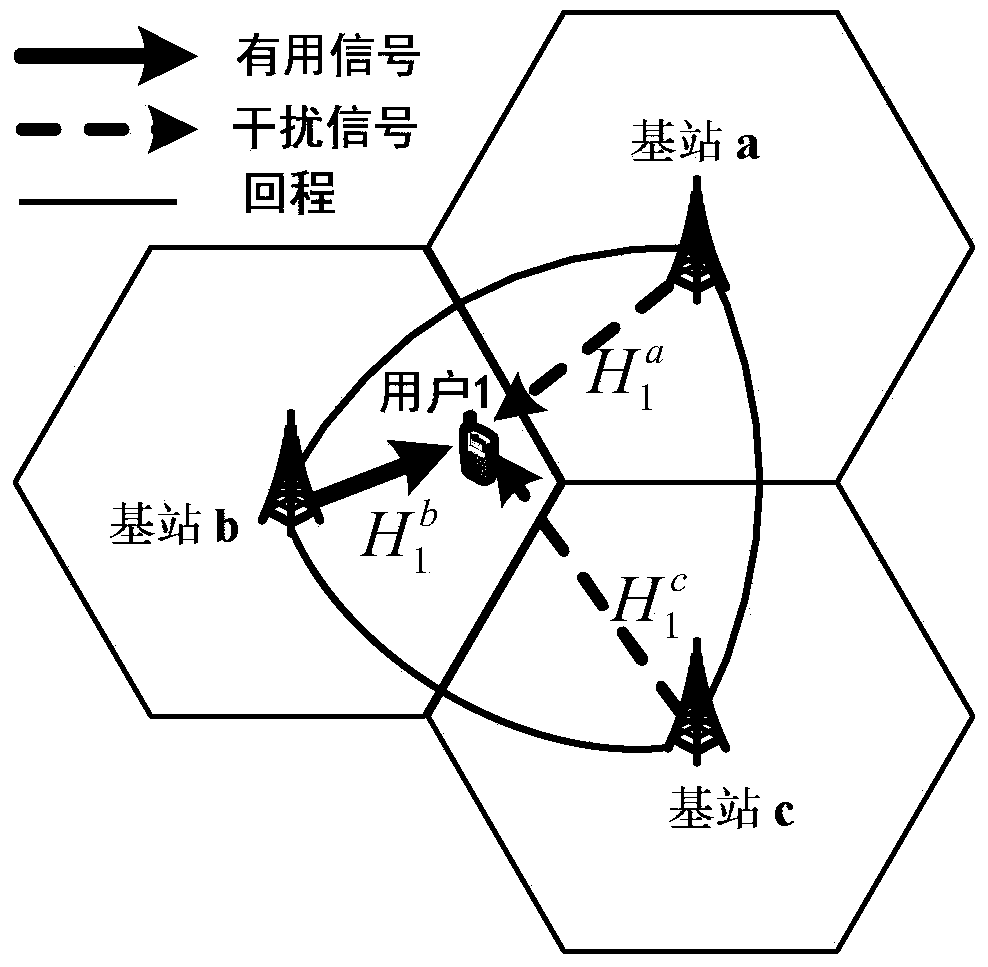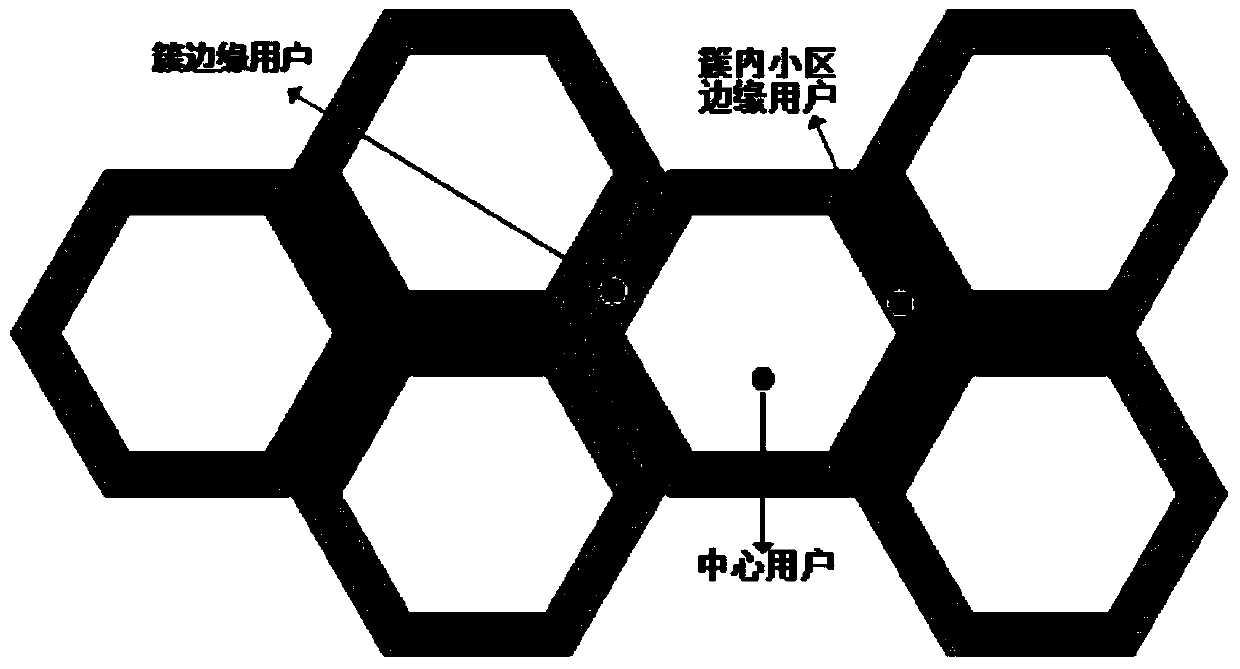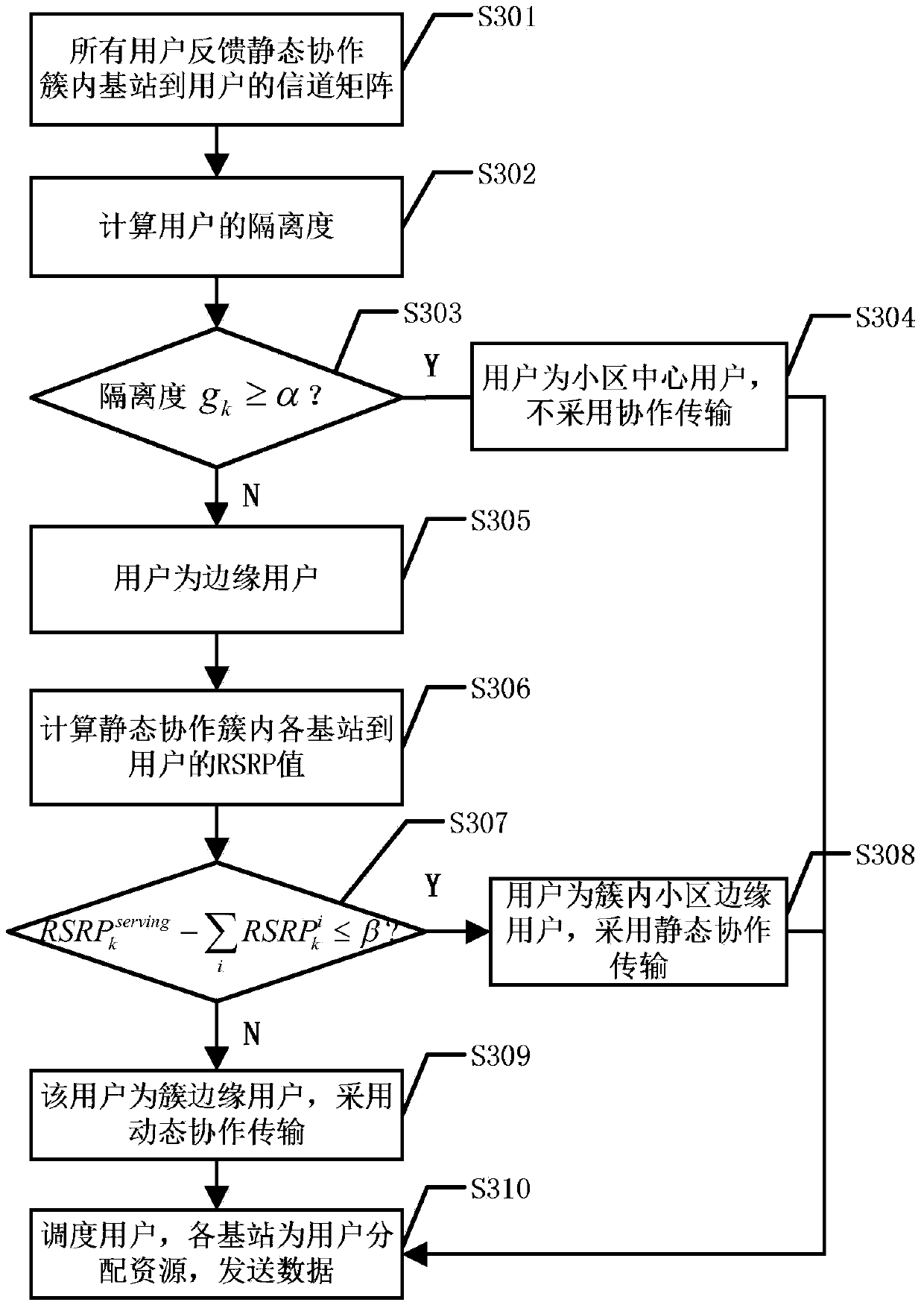Cooperative clustering transmission method
A transmission method and a technology of cooperative clusters, applied in transmission systems, digital transmission systems, multiple use of transmission paths, etc., can solve problems such as large overhead and complexity
- Summary
- Abstract
- Description
- Claims
- Application Information
AI Technical Summary
Problems solved by technology
Method used
Image
Examples
Embodiment
[0036] Assume that the entire cellular system includes N base stations, each base station has Nt transmit antennas, and each user terminal has N r Root receiving antenna. In downlink transmission, B (Bfigure 1 It is a schematic diagram of a typical downlink CoMP joint transmission system model. Such as figure 1 As shown, three base stations cooperate to serve users at the same time, and channel state information and transmitted data are shared among the three cooperative base stations through a backhaul link.
[0037] Suppose user k is at the edge of the cell where base station b is located (that is, the cell is the serving cell of user k), and the cooperative cluster where base station b is located is C k . Then the signal strength received by user k from base station b is:
[0038] y k b = H k b w k b x...
PUM
 Login to View More
Login to View More Abstract
Description
Claims
Application Information
 Login to View More
Login to View More - R&D
- Intellectual Property
- Life Sciences
- Materials
- Tech Scout
- Unparalleled Data Quality
- Higher Quality Content
- 60% Fewer Hallucinations
Browse by: Latest US Patents, China's latest patents, Technical Efficacy Thesaurus, Application Domain, Technology Topic, Popular Technical Reports.
© 2025 PatSnap. All rights reserved.Legal|Privacy policy|Modern Slavery Act Transparency Statement|Sitemap|About US| Contact US: help@patsnap.com



